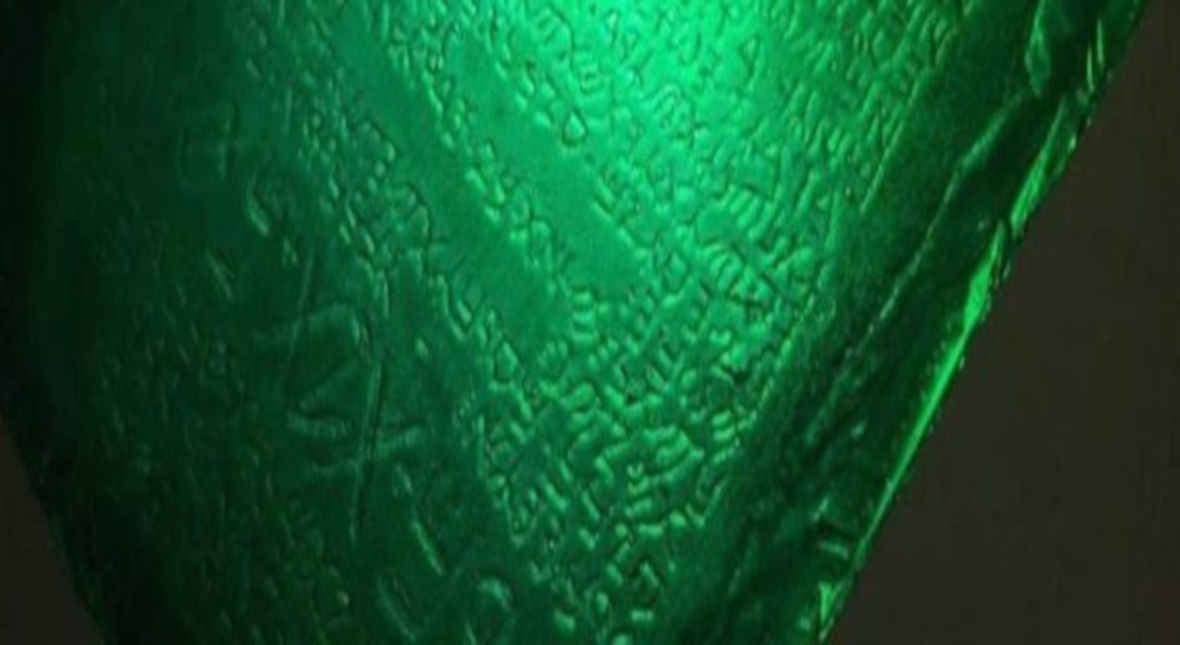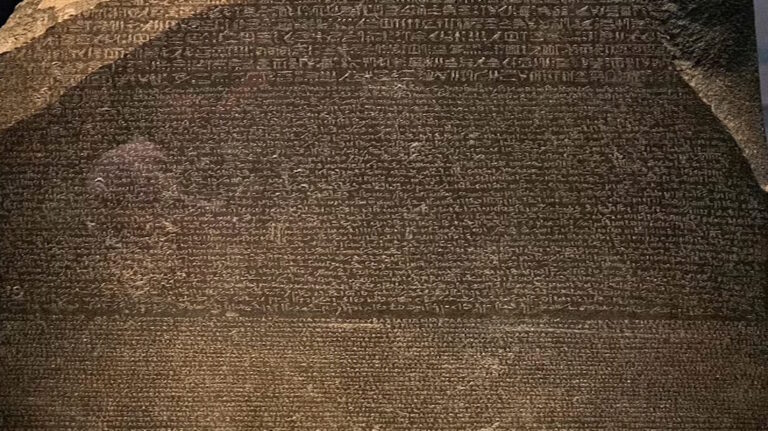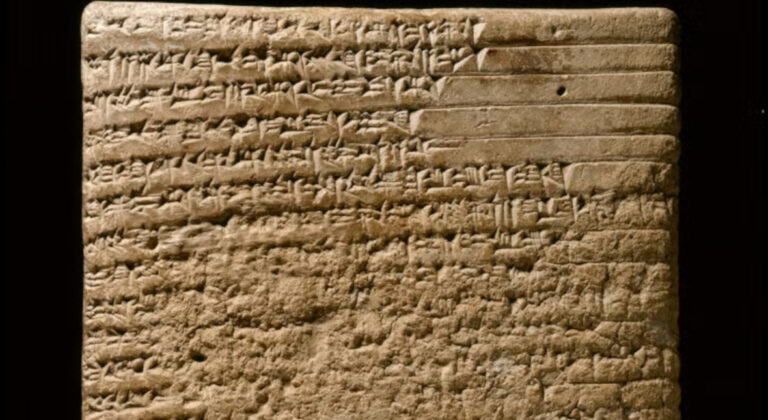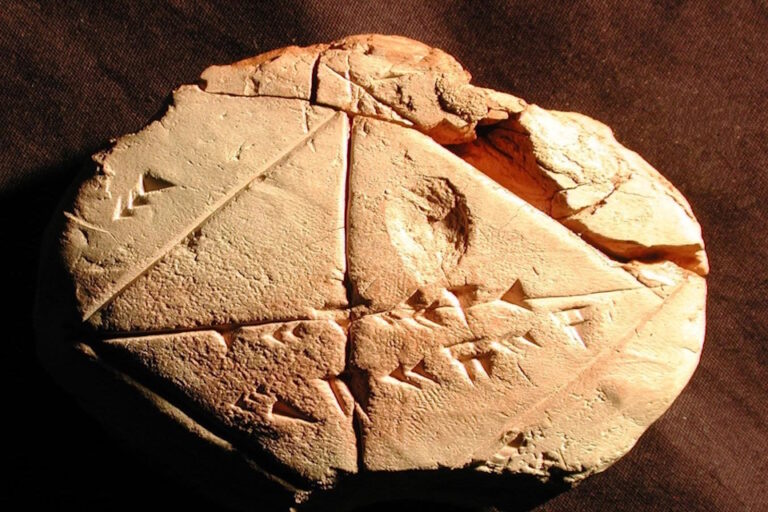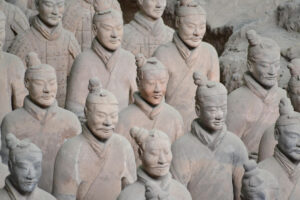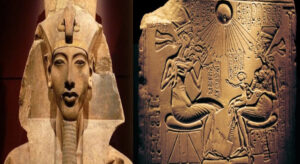The Emerald Tablet—Tabula Smaragdina—occupies a unique place in the annals of esoteric history. Said to be a compact text that contains the secrets of alchemy, creation, and the universe itself, its true origin is shrouded in mystery, myth, and metaphysical intrigue. Legends about the Tablet’s discovery have circulated for centuries, with stories ranging from secret Egyptian tombs to mystical revelations in desert caves. Its name evokes an image of a shimmering green slab inscribed with arcane wisdom—more than just a physical object, it has become a symbol of hidden knowledge, a kind of metaphysical Rosetta Stone.
The most enduring legend claims the Tablet was found in a secret chamber beneath the Great Pyramid of Giza, clutched in the cold, mummified hands of Hermes Trismegistus. The story suggests that the Tablet was carved on an actual piece of emerald—or perhaps green crystal or glass—imbued with magical or divine properties. In other versions, the Tablet is discovered in a cave near Hebron by the sage Balinas (or Apollonius of Tyana), who interprets its inscription as a divine message from the gods or the cosmos itself.
Despite the allure of these origin stories, there is no physical evidence that the Emerald Tablet ever existed in a literal, material form. Instead, it survives through manuscripts, translations, and interpretations, giving rise to the belief that it is a mythopoetic object—a piece of spiritual technology imagined through centuries of layered storytelling.
Hermes Trismegistus: The Prophet of Alchemy
The Tablet is traditionally attributed to Hermes Trismegistus, the legendary “Thrice-Great Hermes” who serves as a bridge between Egyptian and Greek wisdom traditions. Trismegistus is a fusion of the Egyptian god Thoth—patron of wisdom, writing, and magic—and the Greek god Hermes, the messenger, inventor, and psychopomp. Together, these archetypes coalesced in Hellenistic Egypt, particularly in the intellectual melting pot of Alexandria.
In Hermetic literature, Hermes is depicted not as a deity per se but as a divine sage, the first and greatest philosopher, who transcribed sacred knowledge given to him through direct revelation. He is credited with writing thousands of books, including treatises on astronomy, medicine, cosmology, and above all, alchemy. For centuries, he was regarded by occult philosophers as a primordial teacher—older than Moses, a contemporary of Abraham, or even the first human to receive divine knowledge after the fall from Eden.
The Emerald Tablet is considered the distilled essence of Hermes’s teachings. Its famous phrase, “As above, so below,” articulates a central Hermetic tenet: the belief in a fundamental correspondence between the macrocosm (the heavens, the divine) and the microcosm (humanity, the physical world). This simple yet profound idea became foundational in Western esotericism and underpinned centuries of mystical science.
Arabic Alchemy and the Hidden Source
Though traditionally ascribed to ancient Egypt or Greece, the oldest known versions of the Emerald Tablet do not appear until the 8th and 9th centuries CE, within Arabic alchemical texts. The most prominent early source is the Kitāb Sirr al-Khalīqa (Book of the Secret of Creation), attributed to Balinas, who claimed to have discovered the tablet in an underground vault. In this account, the Tablet lay under a statue in a temple in Egypt, surrounded by wondrous devices and inscribed with teachings in an unknown language.
This myth parallels older narratives of hidden wisdom stored in tombs and statues—a motif found in Egyptian, Mesopotamian, and even early Jewish mysticism. The Arabic alchemists regarded Hermes as a prophet and a master of spiritual sciences, associating him with the Quranic figure Idris, who was often equated with Enoch. In their view, the Tablet contained divinely revealed knowledge, part of a lineage of prophetic wisdom that predated the Abrahamic faiths.
These Arabic texts laid the groundwork for the transmission of Hermetic thought to Europe, especially during the 12th-century translation movement, when scholars in Spain and Sicily rendered key Islamic works into Latin. It was through this channel that the Emerald Tablet entered the Western canon and ignited the imaginations of medieval and Renaissance alchemists.
The Tablet as Object: Stone, Crystal, or Myth?
Throughout its legendary history, the Emerald Tablet is said to have been physically composed of a slab of emerald—a material associated with eternity, rebirth, and incorruptibility. In various traditions, emeralds were believed to possess healing powers, to enhance memory, and to grant foresight. The supposed material of the Tablet reinforced its symbolic resonance: green as the color of life, alchemical transformation, and spiritual illumination.
Some versions of the legend suggest the tablet was made from a mystical green glass, or that it was forged by angelic or divine hands. Others claim it fell from the heavens, like a meteoric stone—recalling myths about the Black Stone of the Kaaba or other celestial artifacts believed to link heaven and earth.
But it’s important to understand that in most traditions, the Emerald Tablet is likely not a literal object. Rather, it exists in metaphorical space, as a cipher for esoteric truths that cannot be fully articulated in language or material form. It is an idea rendered in the mythic imagination, carried forward not through stone but through text.
The Tablet’s Impact Across Centuries
Despite (or perhaps because of) its brevity, the Emerald Tablet had an enormous influence on alchemical, philosophical, and mystical traditions across the Islamic world and medieval Europe. Its cryptic verses were studied, commented upon, and retranslated for centuries.
Notable thinkers who engaged with the Emerald Tablet include:
- Jabir ibn Hayyan (Geber): The legendary Persian alchemist who framed chemical processes as spiritual operations.
- Albertus Magnus and Roger Bacon: Medieval European scholars who saw alchemy as a divine science.
- Heinrich Cornelius Agrippa: A Renaissance occultist who merged Hermetic thought with Christian mysticism.
- Isaac Newton: Who translated the Tablet into English and believed its wisdom reflected the natural laws of the universe.
For these thinkers, the Emerald Tablet was not merely about transforming lead into gold—it was about elevating the soul, understanding the structure of reality, and aligning oneself with the divine order. Alchemical transformation was both chemical and spiritual, a mirror of cosmic processes within the human soul.
In the 20th century, Carl Jung found in the Emerald Tablet a prototype for psychological transformation. He saw the alchemical process as a metaphor for the individuation of the self—a journey from fragmentation to wholeness.
Today, the tablet continues to resonate in New Age philosophy, depth psychology, and even in speculative interpretations of quantum physics. The phrase “As above, so below” is now a cultural shorthand for interconnectedness, balance, and universal mirroring.
A Text Without Time, a Symbol Without End
What makes the Emerald Tablet so enduring is its universal language. Unlike many alchemical texts that are opaque and technical, the Tablet speaks in broad metaphors and cosmic principles. Its verses invite endless interpretation—which is precisely why it has fascinated scholars, mystics, scientists, and poets alike.
There is no consensus on the Tablet’s true meaning or even its true age. Some see it as an ancient Egyptian document veiled in allegory. Others interpret it as a Sufi-influenced spiritual metaphor. Some, influenced by Jung, regard it as an expression of the collective unconscious—a symbol of inner transformation projected outward.
Regardless of its origins, the Emerald Tablet has become a central symbol of the Western esoteric tradition—a kind of spiritual compass pointing toward unity, transformation, and the mysterious harmony of all things.
The Text: A Cryptic Revelation
The Emerald Tablet is astonishing not for its length, but for its density of meaning. The entire text consists of a short series of enigmatic aphorisms—typically rendered in 12 to 14 lines—that blend cosmology, alchemy, and spiritual philosophy into a tightly compressed form. It does not present an argument, a narrative, or even clearly defined terms. Instead, it speaks in cosmic poetry, layered with symbolism and ambiguity.
Its tone is authoritative and revelatory, beginning with phrases like “It is true, without falsehood, certain, and most true,” as if it were revealing not an opinion, but a universal axiom—a truth etched into the fabric of reality.
At its core, the Tablet reads like a mystical pronouncement—half divine riddle, half philosophical theorem. Its cryptic quality is deliberate: it invites contemplation, meditation, and interpretation, rather than immediate understanding. This is what has allowed it to resonate through vastly different eras and traditions—from Islamic alchemy to Christian mysticism to Jungian psychology.
The Famous Opening Line: “As Above, So Below”
Perhaps the most quoted line in the entire Hermetic corpus, and certainly the best known from the Tablet, is:
“That which is Below is like that which is Above, and that which is Above is like that which is Below, to accomplish the miracles of the One Thing.”
This statement distills the essence of Hermetic cosmology. It posits a symmetry between the microcosm and the macrocosm—between the internal world of the individual and the vast structure of the cosmos. The phrase suggests that to understand the stars, one must look inward; to comprehend the soul, one must observe the heavens.
It became foundational for Western alchemical theory, where transformations in matter were viewed as reflections of spiritual ascent. But its implications go even further. Philosophers and mystics have taken this axiom to imply that:
-
The human body mirrors the structure of the universe.
-
The divine is immanent in the material world.
-
Self-knowledge leads to cosmic knowledge—and vice versa.
Language as Alchemical Symbolism
The Tablet uses ordinary language—words like “Sun,” “Moon,” “Earth,” “Fire,” and “Wind”—but none of these terms are used literally. Instead, each word acts as a layered symbol:
-
“The Sun” and “The Moon” often represent masculine and feminine principles, or sulfur and mercury in alchemical terms.
-
“The Wind carried it in its belly” refers to a hidden force or subtle spirit—the pneuma or quintessence—that carries and transforms essences.
-
“The Earth is its nurse” suggests that matter itself is the vessel through which divine action manifests.
Every line of the Tablet is both literal and metaphorical, physical and metaphysical. It can be read through many lenses—astrological, spiritual, chemical, psychological—depending on the reader’s perspective. This multi-layered language is precisely what makes the Tablet endlessly rich and inexhaustibly interpretable.
Tone and Syntax: Echoes of Revelation
The Tablet’s syntax is solemn and prophetic, filled with short declarative statements and ritualistic repetition. Its cadence has been compared to religious texts like the Psalms or the Quran—each phrase standing on its own, yet echoing and deepening the others.
The absence of logical transitions or clarifying definitions gives the Tablet an oracular quality, as if it were channeling a higher intelligence that bypasses rational explanation. For example:
“Its force is entire if it be turned into Earth.”
This line, on the surface, seems opaque. What “it” refers to is undefined—possibly the One Thing, or the Prima Materia. But its meaning becomes clearer through allegory: only when spiritual force is grounded in matter does it become complete. Again, the text doesn’t explain—it reveals.
A Text Designed for Initiates
The Emerald Tablet’s cryptic language was never meant to be immediately grasped by the uninitiated. In fact, much of its power lies in its deliberate obscurity. The initiate is expected to meditate on its phrases, to apply them in practice, and to experience their truths experientially, not just intellectually.
In the traditions that revere the Tablet—Hermeticism, alchemy, Rosicrucianism, and esoteric Christianity—the ability to understand its message is itself considered a mark of spiritual readiness. In this sense, the Tablet is not a text to be read, but a gate to be passed through.
Translation Variants and Interpretive Fluidity
Because the original Arabic version has been lost, all modern versions of the Tablet derive from Latin translations, which themselves stem from Arabic intermediaries. This textual lineage has led to numerous translation variations, each shading the meaning differently.
For instance:
-
In some translations, the phrase is “That which is above is from that which is below,” emphasizing origin rather than likeness.
-
In others, “The wind carries it in its belly” is translated more alchemically as “The spirit carries it in its womb,” adding a layer of divine femininity.
Thus, each version of the Tablet subtly reflects the worldview of the translator and the intellectual climate of the time—whether Neoplatonic, Islamic, Christian, or Enlightenment rationalist.
Conclusion: The Eternal Green Flame
The Emerald Tablet is more than a relic of ancient lore—it is a living myth, a beacon for seekers across time who wish to understand the hidden architecture of the cosmos and their place within it. Whether it ever existed in emerald stone or only in the minds of mystics, it speaks to something deeply human: the desire to know, to transform, and to connect the seen with the unseen.
Its central axiom—“As above, so below”—remains as relevant today as it was a thousand years ago, echoing through modern science, philosophy, and spiritual practice. It reminds us that the mysteries of the universe are reflected in the self, and that by seeking to understand the one, we come closer to understanding the other.
